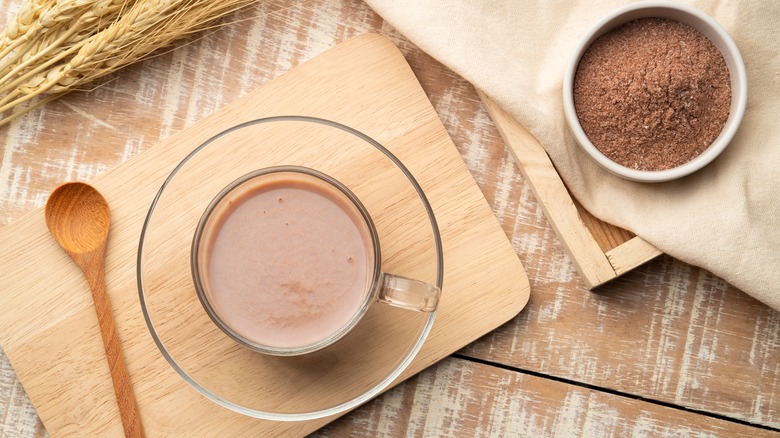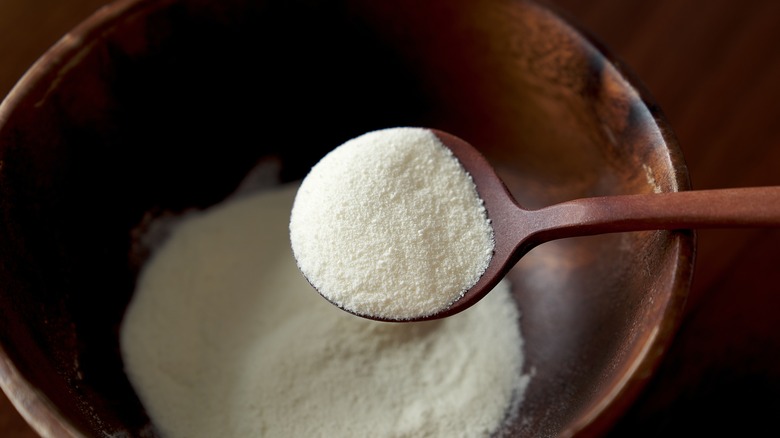The Dairy-Filled Difference Between Malt Powder And Malted Milk
If you're an avid baker, you may have come across two ingredients that seem to be the same thing: malt powder and malted milk powder. One is a helpful ingredient for bakers making bread, the other is treated as a flavoring agent for buttercreams and the like. Despite coming in similar powdery forms and being used in the field of baking, they are vastly different ingredients.
Much of the confusion stems from the fact that both ingredients are made from malted barley, a fermented grain used by beer brewers to make flavorful ales. Malt powder is the dried and pulverized version of malted barley, sold in diastatic and non-diastatic forms (the former having active enzymes, and the latter not). Meanwhile, malted milk powder is a blend of ground-up malted barley and milk powder. This is in its most simple form, with many malted milk powders sold with chocolate and vanilla flavorings.
While all three provide that signature malt flavor to your baked goods, the main feature that separates the two is the addition of powdered milk to the malted milk powder, which makes it richer and creamier, designed for blending into milkshakes or malted milk drinks.
Powdered milk changes things
So how should you use these two ingredients and where will you find them? Malted milk powder is the easier to find of the two ingredients, available in most grocery stores from nostalgic brands like Ovaltine, Nesquik, Milo, and Nestlé Carnation. Anyone who's enjoyed a malted milk ball or a malted milkshake knows that chocolate and vanilla are wonderful complements to the caramel-rich notes of malted milk powder. You could add a richly roasted undertone to the cocoa frosting of a Texas sheet cake with the powder, or stir a few tablespoons into the milk soak for a vanilla tres leches cake.
Meanwhile, malt powder, whether diastatic or non-diastatic, is a more exotic ingredient, often sold at specialty baking shops like King Arthur Baking Company. Bakers use diastatic malt powder for the same reason that brewers use malted barley: The enzymes help convert starch into sugar, or maltose, effectively feeding the yeast. In bread baking, this means taller loaves, better crumb structure, and more golden crust.
So what should you use non-diastatic malt powder for? Because the sugar-converting enzyme is inactive in non-diastatic malt powder, it won't aid in the rise of your bread, but it can still help you get a shiny, golden crust. Bagel bakers in particular like non-diastatic malt powder to add malt flavor and create that signature chewy crust.

